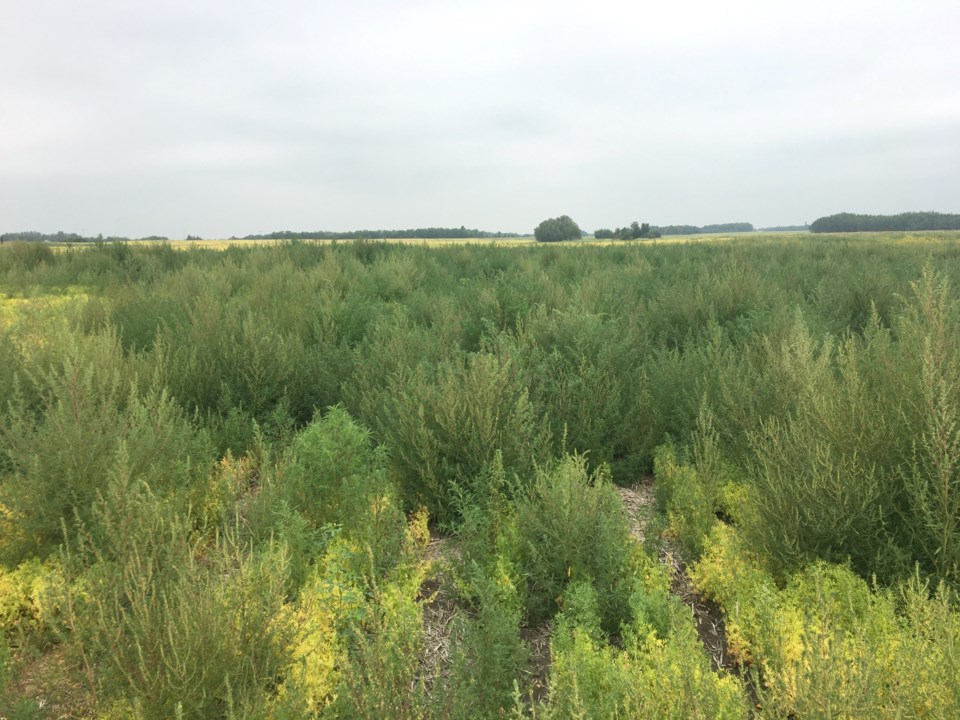A program initiated by the Government of Saskatchewan aims to help reduce the impact of climate change in the province. Titled the Resilient Agricultural Landscapes Program (RALP), the program will provide funding to eligible producers who improve the environmental resiliency of agricultural land using a beneficial management practice (BMP).
A BMP is any agricultural management practice ensuring the long-term health and sustainably of agricultural land that positively impacts economic viability and minimizes environmental risks.
The short- and long-term consequences of climate change remain speculative, but effects are likely to include drought, soil erosion, water quality issues, and a decline in biodiversity.
To mitigate these risks, producers can take actions such as strategically planting tame and native perennial forages in agricultural zones. To provide financial assistance, the Sustainable Canadian Agricultural Partnership (Sustainable CAP) has launched RALP along with other programs as part of a five-year, $485 million investment launched April 1, 2023, by the provincial and federal government.
To be eligible for funding, applicants must be a Saskatchewan-based agricultural producer over the age of 18 with the ability to prove a minimum $50,000 gross annual income, according to agri-environmental specialist Kaitlin Burns.
Program coverage includes agri-businesses in the province and First Nation Bands. If there’s uncertainty as to your eligibility, contact the Agricultural Knowledge Centre at 1-866-457-2377 to speak with a program specialist such as Burns.
Agricultural producers who wish to seed perennial forage have two seeding forage BMPs under RALP: the Seeding Tame Forage BMP and the Seeding Native Forage BMP.
Benefits of perennial forage include carbon sequestration, the reduction of soil erosion, an improved water infiltration of soil, and benefits from increasing biodiversity. Flowering tame forage and the re-introduction of native species provide additional habitat for managed and native bee populations, along with other beneficial insects, Burns said.
Fields infected with clubroot, a soil-borne disease affecting cruciferous crops including canola, can be managed through the introduction of these perennial forages.
Several factors affect the growth of perennial foliage, including soil type, salinity levels, the amount of seasonal precipitation, and other considerations. To help producers make the best decision, the Government of Saskatchewan has a Forage Crop Production Guide available on its website, Saskatchewan.ca.
It is important to note that projects located in environmentally sensitive areas may be covered in legislation including the Species at Risk Act and the Wildlife Habitat Protection Act (WHPA). It’s the responsibility of producers to determine if an area falls under an environmentally sensitive area, and the HabiSask online mapping tool can help assess this. The tool is found at Biodiversity.sk.ca/HABISAsk.htm.
Kaitlin Burns, MSc, BSA, AAg, is an agri-environmental specialist working for the Ministry of Agriculture. Her role includes serving agricultural clients in person or remotely, as well as clients specific to the Agricultural Knowledge Centre.
For more information on this and other Government of Saskatchewan programs, visit Saskatchewan.ca or contact the Agricultural Knowledge Centre at 1-866-457-2377. The Agricultural Knowledge Centre is located at 45 Thatcher Drive East in Moose Jaw.
In response to some providers blocking access to Canadian news on their platforms, our website, MooseJawToday.com will continue to be your source for hyper-local Moose Jaw news. Bookmark MooseJawToday.com and sign up for our free online newsletter to read the latest local developments.




